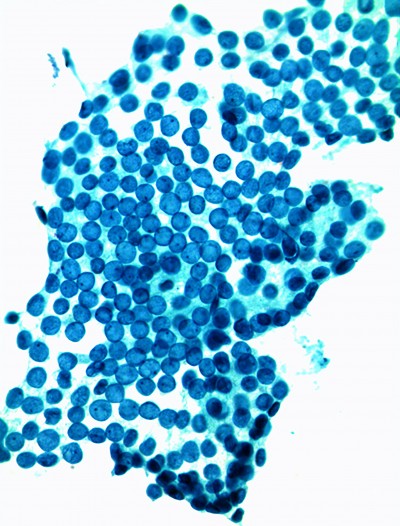Cystic Thyroid Nodules (CTN) - Summary Points
Cystic thyroid nodules (CTN) are very common and are frequently aspirated for cytology examination. In what follows, I attempt to summarize notes, key points, and my experience with cystic lesions.
ASC-US vs. ASC-H? What is the difference?
There is often confusion (and even controversy) among healthcare providers regarding the proper evaluation and management of ASC, especially ASC-H.
The PAS Stain: A Sensitive Test for Diagnosis of Onychomycosis
Although culture was long considered the gold standard, the PAS stain has been shown to be a sensitive method for the diagnosis of onychomycosis.
“Reactive” Pap Results – The End Of An Era
Since 1989, there have been several significant developments in the field of cytology that have rendered the category of reactive changes to clinical obsolescence. This article explains why in a laboratory, reactive changes in a Pap are identified, confirmed to be nonneoplastic, then reported as a ‘Negative’ finding, with clear distinction of the finding from ASCUS or LSIL, without the use of HPV tests.
Use of E-Cadherin & P120ctn IHC for Breast Carcinoma
The combined use of E-cadherin and p120ctn immunostaining on a single slide is very helpful in subclassifying certain breast carcinomas.
Diagnostic Value of Preparing Cell Blocks from Pap Specimens
Cell block preparation is useful for the detection and diagnosis of many other lesions, so why not use it as a complement to the Pap test, especially for diagnostically difficult cases?
Benign Endometrial Cells in Women Over 40 Years of Age: What is the Best Practice?
Q&A on why laboratories utilize the reporting category “Endometrial Cells Present in a Woman over 40 Years of Age” and other important information on this topic.
HNPCC: It’s All Relative
Hereditary nonpolyposis colorectal cancer (HNPCC) is an inherited condition from a parent and develops through changes in their mismatch repair (MMR) genes during DNA replication. This form of genetic destabilization is referred to as the microsatellite instability (MSI) pathway.
